










the
and
in”

for less reliable designs. Improve pumping performance and reduce maintenance costs with our superior dual upper bearing design and heavyduty self-aligning lower bearing designs. For decades we’ve been the go-to source for replacing all screw pump brands. Replacements typically require little or no structural modifications. It’s what you expect from
Equipment—known for nearly a century for
and dependable operation in all wastewater, drainage and industrial applications.








When faced with the unexpected, we rallied together with clients and partners to meet each challenge head-on, implementing new safety protocols, using virtual tools to fuel collaboration, and creating valued industry resources that empowered us to deliver critical projects, from procurement through design and construction. No matter what the future holds, we’re confident that together, we’ll deliver.

2022–2023

President Sarah Ward sarahward@utah.gov
President Elect Sherry Sheffield ssheffield@svwater.com
Vice President Chad Burrell cburrell@sbwrd.org
Treasurer Myron Bachman myronbachman@ndsd.org
Secretary Gary Vance gvance@jub.com


Past President Trevor Lindley tlindley@brwncald.com
WEF Delegate Clint Rogers clint.rogers@stantec.com
WEF Delegate Jeff Beckman jbeckman@bowencollins.com
PWO Representative Dustin Lewis dlewis@sbwrd.org
PWO Representative Elect Nate Cloward nate@cdsewer.org

Director Steve Myers smyers@hach.com
Director Marianka Sochanska msochanska@brwncald.com
Director Rob Jaterka rob@magnawater.com


Director Brandon Wyatt bwyatt@bowencollins.com
Editor Bryan Mansell mansellb@cvwrf.org








After the Annual Conference, the WEAU Board held a committee chair leadership retreat in June. It was nice to see board members and committee chairs work together to solve problems and gain insight into ways to work together. The board is holding additional leadership training for all committee members in October. The training will expand on the June training and will go into more detail on how we can work together as an organization and within our place of employment.
The WEAU committees have been hard at work planning trainings and events. I am always impressed with the efforts made by committee chairs to pull off training and events. If you are interested in becoming part of any committee, please contact me and I will find a committee that could use your expertise.
The Mid-Year Conference is almost upon us. I look forward to seeing many of you on November 15 as we gather for learning and networking.
I have enjoyed reading the nominations received for the Mentor Recognition. Our organization has many individuals who have reached out to others by providing a helping hand, a word of advice, and being kind and understanding. Nominations will continue to be accepted. WEAU will recognize the mentors at the Mid-Year Conference and Annual Conference. Please submit your nomination through an online form at https://forms.gle/ x7r4srnbdqjcgwkea or by scanning the QR code.


Thank you for being a member. We are great because of each of you.
Sincerely, Sarah WardThe WEAU committees have been hard at work planning trainings and events. I am always impressed with the efforts made by committee chairs to pull off training and events. If you are interested in becoming part of any committee, please contact me and I will find a committee that could use your expertise.
A few years ago, my wife and I started a family tradition of taking our four kiddos backpacking over Labor Day weekend. I’ve been backpacking many times before, including with teenage scouts, but up to that point, I had never taken a four-year-old. When we tell people about our plans each year, or pass others on the trail, there is understandably a little bit of concern for our sanity in their eyes. Despite that, it’s brought great memories and time for us to bond as a family with no distractions; so we continue to do it. I have an easy, effective water system figured out and we’ve invested in gear that helps us be reasonably comfortable but there’s no getting around the need to manage our family’s excrement. Thankfully, there are a variety of environmentally responsible ways of doing that, such as bags to haul it out where required (or where a lot of people frequent the area) or digging suitable cat holes. There are also a lot of options for positioning yourself for aim and efficiency. Since fall is a nice time to get out and explore the mountains, I’ll share a few of these that I’ve learned about or tried myself, so that you too can enjoy the experience of pooping in the woods.
1. Free Squat: as the name implies, you simply squat. a. Pros – Simple. b. Cons – Aim and balance required, decent likelihood of missing your cat hole or bag.
2. Break Dance: more stable form of free squat with one hand on the ground behind. a. Pros – Simple. b. Cons – Aim and balance required, decent likelihood of missing your cat hole or bag.
3. Tripod or Pole Dance: essentially the free squat while holding onto a tree trunk allowing you to keep your legs and pants out of the way.
a. Pros – Distance from tree make digging hole easier, arm support to reduce thigh fatigue. b. Cons – Potential for tree sap or other stuff on hands.
4. Tree Squat: Leaning backward against a tree. a. Pros – Well supported for balance. b. Cons – Difficult to dig hole against tree, major thigh workout.
5. Throne: dig a deeper narrow hole and move large rocks on either side to fashion a ‘toilet seat’. Most suitable if planning to stay in one area and can dig a deep, multi-use hole.
Bryan Mansella. Pros – Potentially more comfortable, can accommodate your reader’s digest. b. Cons – Initiative is required before nature calls, skin contact with rocks.
6. Log Over Log: Sitting over a fallen tree trunk or log a. Pros – Reasonably well supported. b. Cons – Suitable footing required for overhang, direct thigh/cheek contact with log and everything crawling on it.
7. Lazy: Standing in a slight squat, with or without tree support
a. Pros – Simple, less thigh fatigue
b. Cons – High likelihood of having to change clothes afterward. I see my responsibility and opportunity out in the woods with my family like the that of our industry. We help society manage a part of humanity that most other don’t want to think about, let alone talk about, in a way that helps mitigate its effect on the environment, minimize odors, and maintain the ability of people to be sanitary. There are a variety of ways to go about it, and most by-in-large work well thanks to the dedication of so many to make it all happen. I’m proud to be part of that effort and am so impressed by the members of WEAU, especially the many folks who volunteer consistently to help each other and our industry to succeed.
We help society manage a part of humanity that most other don’t want to think about, let alone talk about, in a way that helps mitigate its effect on the environment, minimize odors, and maintain the ability of people to be sanitary.


Each quarter, Digested News has this golden sludge shovel icon hidden somewhere in the content of its pages. Be the first to find it and email the editor (digestednews@weau.org) the correct page number to win a $25 Amazon Gift Card.

Emails should include:
• Subject: I found the golden shovel
• Correct page number
• Your name and work address
Winners will be notified directly and named in the next issue of Digested News


*For those of you new to WEAU, volunteers who give notable time and service to WEAU are awarded a “5S” golden lapel pin shovel. With that award, they become members of the Select Society of Sanitary Sludge Shovelers. WEAU is always looking for volunteers and maybe one day, you too can become a 5S member.

CONGRATS TO: JAMES DIXON OF CENTRAL WEBER SEWER IMPROVEMENT DISTRICT FOR BEING
Representing the Wastewater Industry in Utah, Idaho,





























1. Lift stations are generally classified as either of two types?
A. Centrifugal or Suction Lift
B. Submersible or Dry Pit
C. Kinetic or Flooded Suction D. Dry Pit or Suction Lift
2. Submersible lift stations are noted because the pumps are located _______.
A. Above ground
B. In a vault
C. In the dry pit
D. In the wet well
3. What helps to create the discharge seal on a submersible pump?
A. The weight and cantilever of the pump
B. The PSI of the discharge line C. The head pressure on the discharge line
D. The stuffing box
4. To pull a submersible it must be unbolted from the discharge flange.
A. True B. False
5. The piping on the discharge side of the lift station is called the _______.
A. Receiving pipe B. Force main C. High Pressure pipe D. Outfall main
6. A lift station check valve that closes too fast can result in ____________.
A. Broken impellor B. Cavitation
C. Water hammer D. Seal failure

7. Friction losses in piping are caused by ____________.
A. Outside pipe roughness B. Pour installation
C. A half full pipe
D. Velocity of the wastewater
8. What is the cycle time given the following data the wet well volume is 200.5 cubic-feet the pump capacity is 200 gpm and the inflow is 100 gpm?


A. 15 minutes B. 20 minutes C. 25 minutes D. 30 minutes
9. The lowest level a wet well can be pumped down to is determined by the center line of the volute or _______ _______, whichever comes first.
10. Impellors are sized at _______, as this is what the standard toilet will pass through. A. 2'' B. 2.5'' C. 3'' D. 3.5''

1-B,2-D,3-A,4-B(False),5-B,6-C,7-D,8-A,9-Vortexcreation,10-B.

1. Natural systems have enough assimilative capacity to treat wastewater from urban areas.
A. True B. False
2. Wastewater treatment is necessary to protect public health and the environment.
A. True B. False
3. The term water resource recovery facility (WRRF) was recently adopted by Water Environment Federation because it better reflects our goals as a profession.
A. True B. False
4. Most of the fats, oils, and grease present in influent wastewater come from petroleum products. A. True B. False
5. A pathogen is ___________.
A. A bacteria or virus found in wastewater
B. Any organism capable of causing disease
C. Unable to survive for long periods outside wastewater
D. Dependent on TSS to reproduce
6. Solids that are retained by a 1.2-µm filter paper and are burned away in a 550oC furnace are ___________.
A. Total dissolved solids (TDS)
B. Total volatile solids (TVS)
C. Total volatile suspended solids (TVSS)
D. Total non-volatile dissolved solids (TVDS)
7. The biochemical oxygen demand (BOD) test measures ___________.
A. Biodegradable organic material
B. Percentage of organic suspended solids
C. Quantity of live bacteria
D. Amount of oxygen need to stabilize wastewater
8. Solids that are able to pass through a 1.2-µm filter paper and remain unchanged after spending time in a furnace at 550oC may be described as ___________.
A. Dissolved and inorganic B. Suspended and inorganic C. Dissolved and organic D. Suspended and organic
9. Some treatment facilities are required to remove ammonia as part of their discharge permits for this reason.

A. There is a safe drinking water limit for ammonia
B. Ammonia reacts with organic matter in natural systems to form mustard gas
C. To protect downstream agricultural users from over fertilizing crops
D. Ammonia is toxic to fish and aquatic life
10. The biochemical oxygen demand (BOD) test is typically performed as a five-day test for this reason.
A. It only takes the Thames River five days to reach the ocean
B. The bottles only hold enough dissolved oxygen for a five-day test
C. The bacteria only live for five days
D. All of the organic material is consumed within five days
11. By definition, how much oxygen is required to stabilize or treat 1 kg of BOD?
A. 1 kg B. 2 kg C. 3 kg D. 4 kg
12. Which of the following pollutants is most likely to cause an algae bloom in a lake or river?
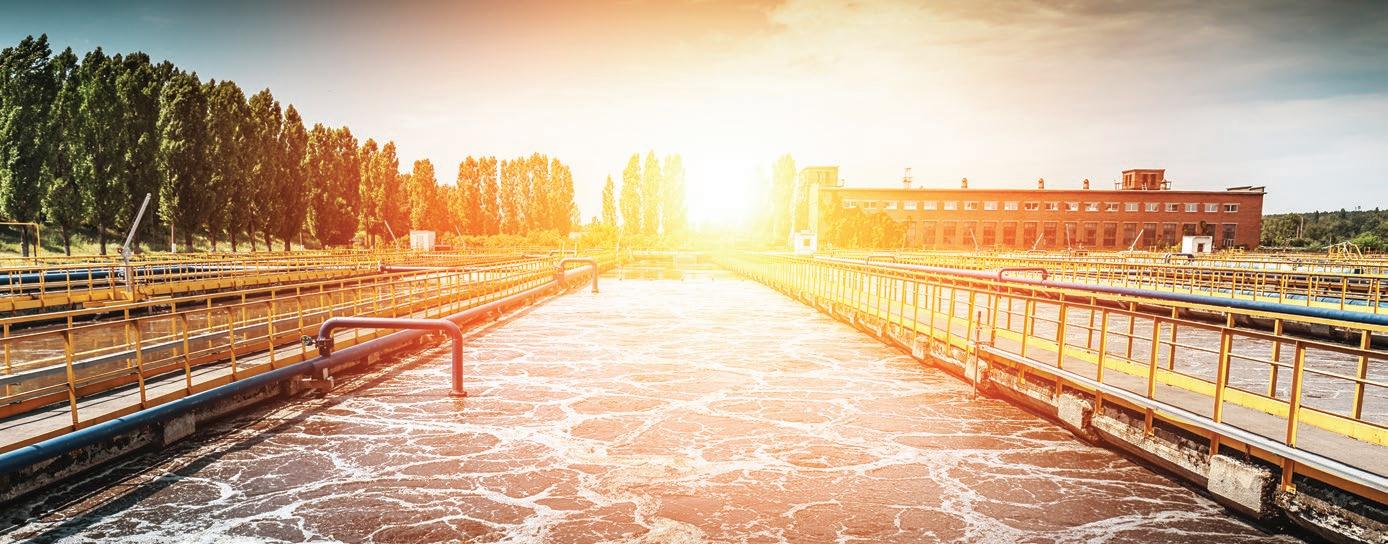
A. Total suspended solids (TSS)
B. Biochemical oxygen demand (BOD)
Phosphorus
Turbidity
13. The Clean Water Act was promulgated in 1972.
True
False
14. All direct dischargers are required to have a discharge permit.
True B. False
15. The discharge permit system depends on accurate self-reporting of effluent quality.
A. True B. False
16. An operator will be fined and serve time in prison if the average effluent suspended solids concentration exceeds the limit given in the discharge permit.
A. True B. False
17. The monthly discharge monitoring report must be signed by the town attorney.
A. True
False
18. US EPA can set limits for heavy metals, cyanide, volatile organic compounds, and pesticides in direct discharge permits.
A. True B. False
19. A WRRF has a 30-day monthly average BOD5 limit in their permit of 30 mg/L. Two samples were collected in May with results of 28 and 36 mg/L. The operator should
A. Report only the first result to remain below the permit limit
B. Average the results together and report a permit violation.
C. Alter the second result to read 26 mg/L and then average the results together.
D. Go back to his office and work on his resume.
20. The secondary treatment standards set effluent limits for these parameters.
A. B0D5, CBOD5, TSS, and pH B. FOG, B0D5, and TSS
C. Nitrogen and phosphorus
D. Pathogenic organisms
21. ABC Corporation manufactures tires in Metro City. All of the process water they generate is discharged to the sewer and is conveyed to the city’s water resource recovery facility (WRRF). What type of discharger is ABC Corporation and who issues their discharge permit?
A. Direct, US EPA B. Indirect, state C. Indirect, US EPA D. Indirect, Metro City WRRF
22. Another name for a grinder is a comminutor.
A. True B. False
23. A trash rack is a manual bar screen with openings between the bars smaller than 5 mm (0.25 inch).
A. True B. False
24. Which of the following treatment processes would be considered a physical treatment process?
A. Grit basin
B. Trickling filter
C. Chlorine disinfection
D. Anaerobic digestion
25. Sanitary sewers receive this type of flow.
A. Stormwater only
B. Municipal wastewater only C. Both stormwater and municipal wastewater
D. Both municipal wastewater and industrial wastewater
(Trashrackshavewideopeningstoremovetrashandlargedebris),24-A,25-D.
areasconcentratealargenumberofpeopleandbusinessesintoasmallareaand dischargethemintooneorafewlocations.Theresultisreduceddissolvedoxygen, fishkills,andotheradverseeffects.)2-A,3-A,4-B(Mostcomefromanimalsourceslike bacon),5-B,6-C,7-D,8-A,9-D,10-A,11-A,12-C,13-A,14-A,15-A,16-B(TheFederal penaltiesshowninTable1.2,includingjailtime,onlyapplywhenapersonknowingly andwillfullyfalsifies,conceals,orcoversupapermitviolationormisrepresentsa permitviolationwithfraudulentstatements),17-B(Permitapplicationsandrequired reportsmustbesignedbyanauthoritystate-licensedindividualofresponsiblecharge,a principalexecutiveofficer,orrankingelectedofficial),18-A,19-B,20-A,
Certification Training 1-B(Naturaltreatmentsystemshavealimitedcapacitytoassimilatepollutants.Urban










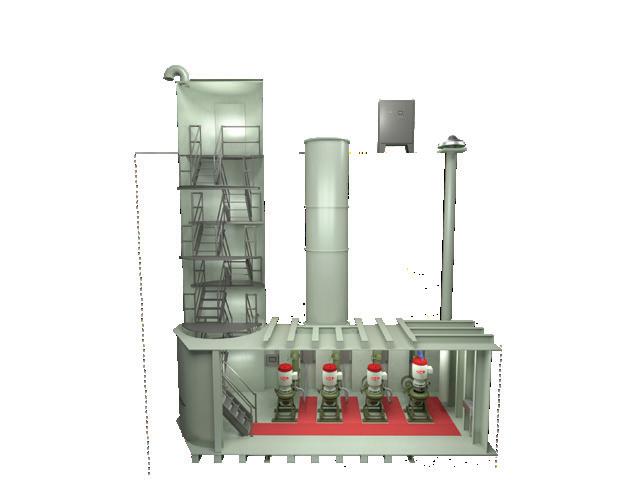




 PWO [Professional Wastewater Operator]
PWO [Professional Wastewater Operator]

Well, it’s that time of the year again where we have people trying to get all the things done that need done as the summer is coming to an end, and Operations Challenge is right in the mix of it all. WEAU has two teams going down south this year to WEFTEC in New Orleans to compete for the title. We have the team from Central Valley WRF, Wasted Gas, who took first place at the WEAU Annual
Conference back in April and the Wasatch All-Stars, a team consisting of five members from various entities who also competed last April.
There is a lot that goes into teams competing in the Operations Challenge, such as teams practicing for days and days beforehand and the entities allowing their staff to have time off-site to prepare. There is a big commitment from
Hadley Gunn is a maintenance mechanic at Central Valley Water Reclamation Facility, where he has been employed for 12 years. Over those years, he has obtained his Operator Treatment Grade 4 and Maintenance Technician Grade 3 certifications. He’s also completed CPR and forklift training and has received his crane operator certificate. Being a Grade 4 mechanic at Central Valley, Hadley has a very wide range of duties, including HVAC work, plumbing, heavy equipment operation and repairs, maintenance, and rebuilding of pumps, gates, valves, etc. Hadley was also awarded Outstanding Maintenance Specialist in 2018.
Over his career, he has been given the opportunity to compete in the Operations Challenge team for six years, competing at WEFTEC for three of those years. That was a great experience to help him grow in the industry and meet a lot of great people. After competing, he became the Operations Challenge Chairman for WEAU. He has been in that position for three years now. This year will also be his third year as a judge at WEFTEC in the safety event.
Outside of work he enjoys hunting, fishing, and camping with family and friends. He has also been competing in horse shows, rodeos, and jackpot roping since he was six years old, as well as training and showing horses with his father since he was 12 years old. Rodeo has given him lot of opportunities growing up. In high school, he was the Utah High School State Rodeo President, competed at High School National Finals Rodeo, and received a full-tuition rodeo scholarship to Cochise College in Douglas, AZ.
everyone, and we want to thank everyone for all their continued support. I would especially like to thank the operator in this issue’s spotlight for all his hard work with the Operations Challenge. There is a lot of behind the scenes work that goes into making the event happen in St. George and at WEFTEC, and he plays a critical role in the success of both.

2022
NOVEMBER 15, 2022 8:00 am-4:00 pm
Utah Cultural Celebration Center 1355 West 3100 South West Valley City, Utah
The Water Environment Association of Utah is dedicated to the professional growth of its members and the preservation and enhancement of the water environment.


Are you a certified operator in need of continuing education units? You can earn up to 0.5 CEU by attending the WEAU Midyear Conference. Are you a professional engineer? It is required that you complete a minimum of 30 hours of professional continuing education within a two-year renewal cycle. The time you spend in sessions at the conference counts toward your continuing education requirement.
Registration information is available at www.weau.org. A continental breakfast and lunch will be provided as part of the registration.
TIME PLAZA BALLROOM
8:00-8:30
BALLROOM
Using UV energized Sulfites for Nitrate Removal from Wastewater
8:30-9:10
Marcus Theodore, Earth Renaissance Technologies, LLC
Pride and Progress: Construction Underway on New Spanish Fork WRF
Advanced Lining/OBIC Infrastructure Lining Material
Cory Pierce, Spanish Fork City Seth Huggins, Advanced Lining, LLC
Advantages of Preconstruction Services for Capital Projects: An Electrical Approach
Michael Hamilton, Skyline Electric Company
9:20-10:00
10:00-10:20
Tertiary Phosphorus Removal: Implications of Low Total Phosphorus Limits on Process Selection
Alexandre Crozes, Carollo Engineers, Inc.
Clean Water Needs Survey Little Time Left
Harry Campbell, State of Utah, Division of Water Quality
Blue Stakes: What You Don't Know But Should
Tools to Mitigate Supply Chain and Escalation Challenges
Spence Felsted, Blue Stakes of Utah 811
Optimizing Polymer Mixing and Activation: Following the Science

10:20-11:00
What Were You Thinking? NDSD's Inhouse Influent Gate Replacement
Gloria Rock, UGSI Solutions Myron Bachman, North Davis Sewer District
HDPE Lined Concrete Pipe, Eliminating Corrosion in RCP Sewer Systems
Brandon Tremelling, Geneva Pipe and Precast, A Northwest Pipe Company
Assessing the Condition of Electrical and Instrumentation Systems
Chris Thunhorst, Hazen and Sawyer
11:10-11:50
12:00-1:20
Adaptive Mixing and Process Optimization with Energy Savings

Alden Meade, Xylem
Time for Water Reuse to Secure Our Future Generations: A Case Study on Provo
Jenny Calderon, Waterworks Engineers
LUNCH
How to Inspect, Prioritize, and Rehab Your Sewer Collection System
Mark Poppe, Brown and Caldwell
Becoming an Effective Leader
Mike Chandler, Ash Creek Special Service District
The Ferrous Chloride Treatment Technology: Full-Scale
1:30-2:10
Brenden
Laboratories,
McCandless,
for Collection Systems
Peterson,
Leveraging Field Data Technologies: Considerations and Cybersecurity
Company
Navneet Prasad, Central Valley Water Reclamation Facility
New Capital
Preparing Your Laboratory for
Susan Spore,
Jason Watterson,
Monika Surasani,
Company
Tony Francis, SAW
at Utah Lake
with



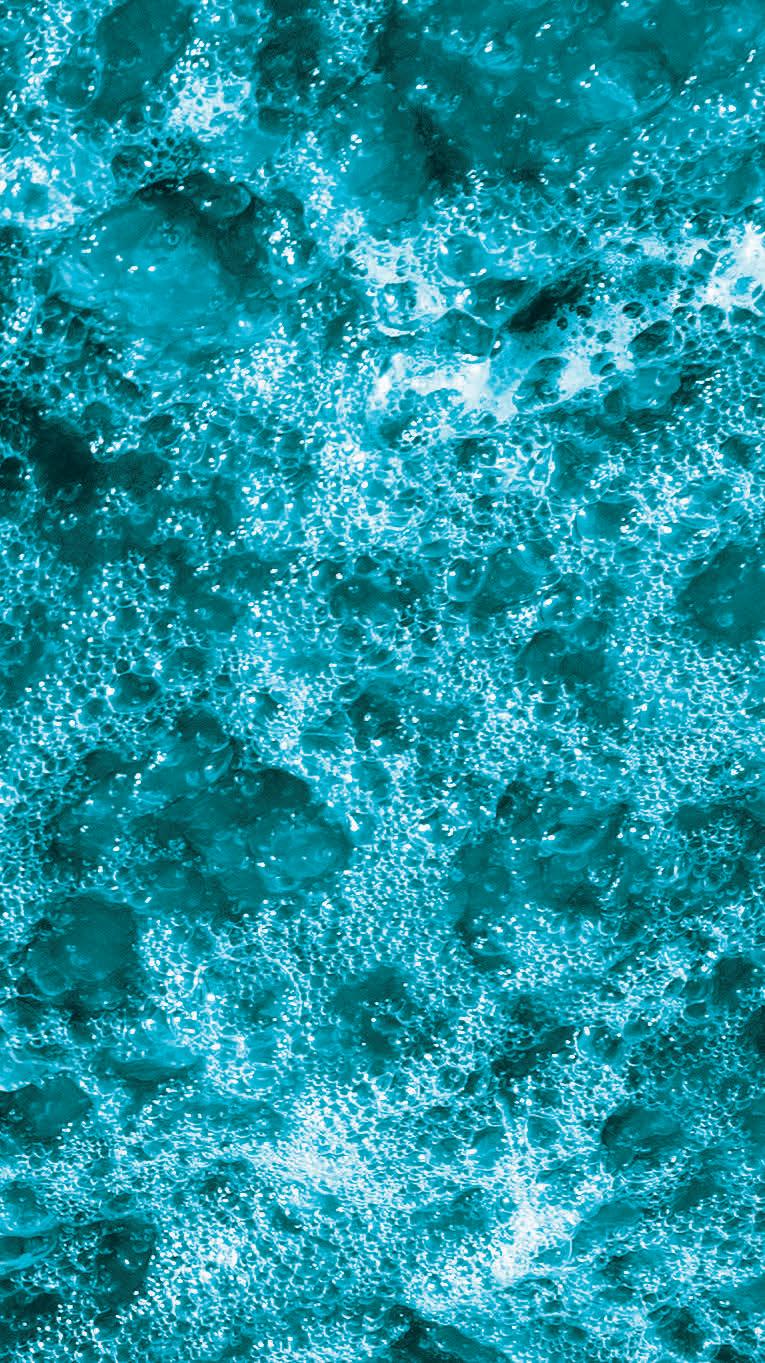







































































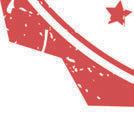









MARK YOUR CALENDAR APRIL 25-28, 2023 Dixie Convention Center St. George, Utah

The Water Environment Association of Utah is dedicated to the professional growth of its members and the preservation and enhancement of the water environment.








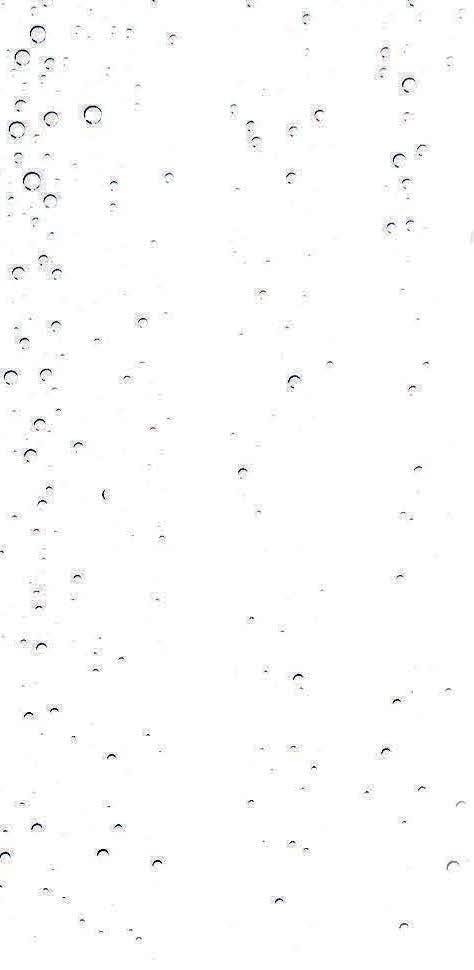















































































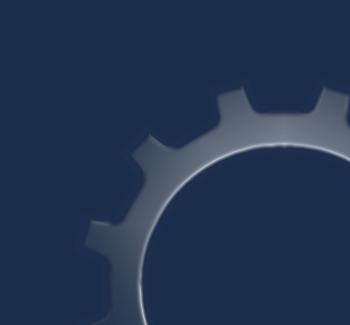















































































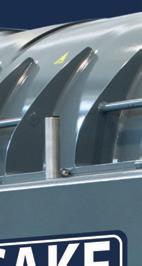




































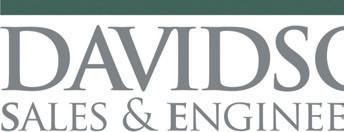 DRAIMAD
DRAIMAD
 By Navneet Prasad, Digital Water Committee Chair, Electrical Controls Engineer CVWR F
By Navneet Prasad, Digital Water Committee Chair, Electrical Controls Engineer CVWR F

he main goal of the Digital Water Committee is to provide WEAU members with insights into new trends in the digital space of the water/wastewater industry, digital transformations happening at POTWs, and new technologies being introduced in the following fields: laboratory, instrumentation, controls systems (SCADA, DCS, PLC, HMI), electrical systems, process optimization, energy efficiency, operations and more. With this in mind, the Digital Water Committee organized its first workshop/seminar, held on August 17, hosted at Central Valley Water Reclamation Facility. This training was attended by operators, electricians, mechanics, engineers, university professors, and students. It was great to see such a diverse crowd.
The title of the seminar was Process Control Architecture and Cybersecurity Basics. This topic was picked from the poll that was conducted during the WEAU Annual

Conference this year in St. George, UT. About 85 people voted during the conference with around 15% of the expressing interest in learning more about smart instrumentation and control systems, and around 11% interested in cybersecurity. Our committee decided it will be great to start this workshop series by covering the basics of process control systems and talking about cybersecurity which go hand in hand with operational technology (OT) and information Technology (IT). We had a great group of presenters with varied backgrounds covering an array of topics during the workshop.
Eric Smith, President of APCO Inc., Ωstarted the proceedings with control systems basics. He spoke about control systems fundamentals and gave a highlevel picture of how the processes work using various control systems and ancillary equipment, how various process instrumentation connects to the control system, how data flows back and forth,
“THE DIGITAL WATER COMMITTEE DID A GREAT JOB PUTTING THIS WORKSHOP TOGETHER AND WOULD LIKE TO THANK WEAU FOR GIVING US THIS OPPORTUNITY AND HELPING US SET THIS COMMITTEE UP.”
and what kind of networks are typically on a site. Thomas Herbert, Application Development Manager with Hach, presented on Instrumentation Basics. He covered topics ranging from sensors, the difference between transmitters and controllers for various instrumentation, communication protocols used (such as Modbus and Ethernet IP), and the future industry trends in this area. Next, Navneet Prasad, Electrical Controls Engineer at Central Valley Water Reclamation Facility, spoke about Electrical Systems Basics. His presentation covered basics about electrical generation and distribution, various distribution electrical systems and equipment on a wastewater plant, basics of circuit protection devices, the importance of electrical safety, the new trends in the industry with respect to electrical systems, and how cybersecurity is playing an important role, even for the electrical system, to keep both systems and people protected.
These topics provided a segway for our next presenter, Jason Stansfield, IT Director of the North Davis Sewer District, to dive into how all the above systems (i.e., operation technology), have started integrating more with information technology (IT). He highlighted how both OT and IT have different architecture, how the integration of the two is critical to cybersecurity and why the way forward requires OT and IT working together in a well-integrated way to solve challenges and protect various business and process systems across wastewater facilities.
Following, we had Gage Downing, Business Analyst and Digital Consultant at Stantec Inc, who presented Steps Needed for Digital Transformation. His short presentation was powerful, talking about how entities can take proper steps toward



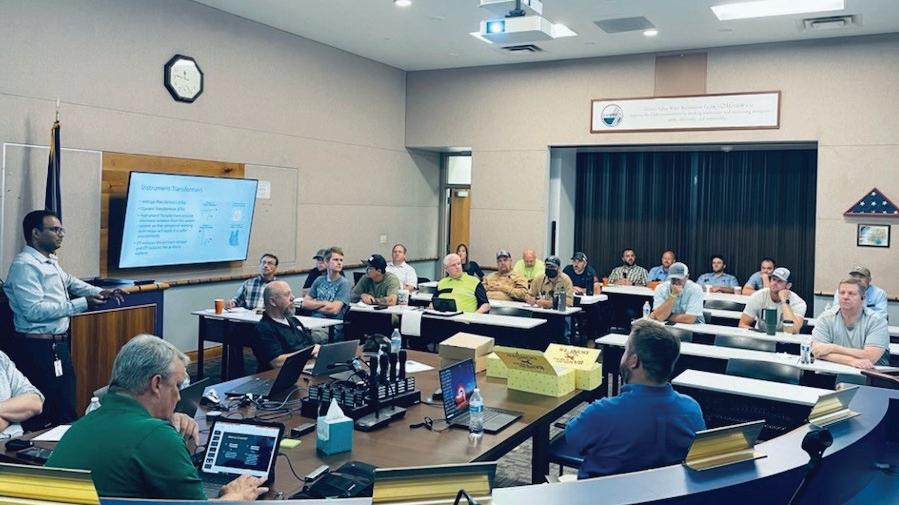
digital transformation and change the way they think. He spoke about the power of data and how we need to protect it too and why cybersecurity is important in this respect.
These foundational topics led the way for our guest lecturers to talk more about Cybersecurity and the resources Federal
and State agencies can provide to water/ wastewater entities to help them be cyber secure. We had Richard Gardner with Cybersecurity and Infrastructure Security Agency (CISA) present on steps that each individual needs to take to be cyber secure, he also, spoke about what tools and resources CISA can provide to

wastewater entities which included threat analysis and cyber support and help to secure entities business and process systems. Finally, we had Mallorie Nielsen, Cyber Threat Intelligence Analyst with the Utah Statewide Information and Analysis Center (SIAC). She spoke about various cyberattacks that have happened in Utah and across the US, and how simple mistakes by individuals can be so devastating to organizations. She spoke about ransomware and what cybercriminals can do to impact your organization. She also mentioned that entities have access to various state resources and how SIAC can help them.


The Digital Water committee did a great job putting this workshop together and would like to thank WEAU for giving us this opportunity and helping us set this committee up. We feel the topics discussed above are very important, and people across our industry need to understand them at least on a basic level as cybersecurity is affecting everyone now and in the future. Various technological changes are driving processes to be more and more integrated whether it



W ith the changing threat landscape, the risk of security breaches is increasing. Maise cybersecurity solutions provides businesses with world-class cybersecurity support and services. Our internal compliance risk program enables your organization to prevent, detect, and respond to compliance risks, demonstrating a culture of compliance and better business performance. Whether managing regulatory obligations, policies, incidents, investigative cases or third-party risk, our workflow and learning content capabilities deliver an integrated approach to managing compliance risks. Cyber-attacks and breaches occur every single day. Most never make the news, but when they do, they’re usually about large well-known international corporations. However, statistics show otherwise.
According to Verizon’s Data Breach Investigations Report, 71% of the data breaches investigated by the company’s forensic analysis unit targeted small businesses with fewer than 100 employees. The coronavirus crisis has changed the world as we know it. With social distancing, lockdowns, and work from home becoming the new normal, cybercriminals are exploiting the situation. Maise provides our cybersecurity customers with technical support, professional services, and professional accredited support personnel to help with the deployment of our cybersecurity products, troubleshoot issues, and assure peace of mind.


Maise cybersecurity solutions is one of the most trusted cybersecurity programs on the market, with hundreds of satisfied clients. We aim to ensure the safety of your business and IT solutions against any cyber-attacks and hacker threats.
We assess your current cybersecurity protocols to ensure that your firewalls are up to date to resist any kind of virus. Our experts implement an efficient strategy that can protect your business without affecting the standard workflow of your office.

If you want Maise cybersecurity solutions to analyze your business for possible vulnerabilities, our team has state-of-the-art detection systems. We effectively detect and neutralize the security threats so that you are safe from the reach of hackers.
From physical IT solutions to managing and securing your cloud storage, we are the right cybersecurity service provider. We can automate the security protocols in such an intelligent way that we can minimize your need to worry about security threats anymore.
Reducing risk is an essential part of your overall business strategy. Many organizations lack defined Policies and Procedures. This limits the ability of an organization to move from reactive actions to strategic decisions. At Maise, we understand that clear and defined direction is critical to reducing risk and meeting strategic objectives. We will help establish and maintain your Information Security Policies and Procedures.
There are some things that only humans can fix. 95% of all security incidents involve human error. Two of the biggest mistakes a company can make are assuming their employees know internal security policies and assuming their employees care enough to follow policy. What’s the best defense against this one? The single biggest defense is education. Training your people to be constantly wary of all the emails and documents they receive. As part of Maise’s Cybersecurity Support, we provide regular training to employees and
To summarize, you need to have a defense plan for each of the layers that a hacker can attack:
The Physical Layer – You need policies to ensure the integrity of your organization

The Network Layer – Make sure that only authorized devices access your network, and your devices only access authorized networks
The Human Layer – You should make your employees practice good password hygiene and are aware of security threats
 By Aimee Matthies INTO IT
By Aimee Matthies INTO IT
This last year has brought to the forefront of my mind the necessity of putting my heart into it. And by “it,” I mean the top of my list in staying healthy. The past 12 months have been a wild ride for me personally that led to this revelation. In early September 2021, I suddenly found myself waking up in a hospital bed with very little recollection of what was going on. Apparently, I had suffered a massive pulmonary embolism leading to cardiac arrest. A blood clot that I did not know I had, broke free and made its way to my lungs, which caused extreme stress on my heart. Without the ability to pump blood through my lungs, my heart ended up stopping five different times. I was so very fortunate that the paramedics were close to my house and that they, as well as the doctors in the emergency room, were able to save my life!
However, because of these events, I still suffer from some heart and lung damage. I never would have thought that I, at 34 years old, would need to be taking heart medication. Even worse than the new meds, however, was learning just shortly after I woke up that the incredible Paul Krauth had passed away due to a heart attack.
I was shocked and confused. I had just seen Paul approximately a week or so before I went into the hospital. Once I processed my emotions and worked past my lingering confusion of the anesthesia, I vowed to take better care of myself. Although heart attacks can strike anyone at any time, having a healthy heart improves your chances in being spared this fate. So here are some very important, but easy, steps that you can take.

“This is the story of how I died… But don’t worry! It’s a very happy story.” – Flynn Rider, Tangled Walt Disney Animation Studios, 2010
Take five to ten minutes each day to just breathe. Focus on your breathing and relax your shoulders. This can help lower your blood pressure. You can even try yoga, pilates, or tai chi.

Just start small. Walk around your plant or your office building during one of your breaks for five minutes. Look for small exercise that sound fun, like gardening, swimming, and walking, then increase your duration of movement over time.

See if you need to reduce your LDL or raise your HDL (bad and good cholesterol respectively). Don’t change your diet wildly. Maybe replace one high fat or high sugar meal each week with a healthier homemade alternative when you can.
Before my blood clot broke loose, I had pains in my leg (where the blood clot was, called DVT), but my doctor did not think I was at risk for blood clots. However, I still had pains a couple weeks later and I had started getting short of breath every time I went to the gym. After a negative COVID-19 test, I should have gone back and asked for testing to be done but I brushed it off as me being out of shape. That was a very expensive mistake, in terms of money, time, and physical pain.
Recognize the signs of a heart attack or any other medical trauma that requires emergency services. My husband was able to call 911 for me when I was suffocating, but he had no idea what to do otherwise. He felt useless. Learning CPR and first aid could save someone’s life.
Remember, the smallest effort is where it starts. Put your heart into what you do but don’t forget to include staying healthy as a part of that!
“Take five to ten minutes each day to just breathe. Focus on your breathing and relax your shoulders.”







Since our inception, Integrity Inspection Solutions has become the leading service provider with the most advanced pipe inspection, pipeline cleaning, cured-in-place pipe lining technologies, vacuum-excavating, certified Raven 405 protective coatings applicators and solutions in the industry.
Integrity Inspection Solutions is built upon a solid Safety-First philosophy. Safe and environmentally sound services begin with a commitment and a proactive approach to identifying hazards and mitigating risk.


Our company culture instills a sense of pride and duty to protect the health and welfare of every employee, and everyone we associate with during our business activities. To be successful we
know we must execute our work safely while consistently meeting customer expectations in quality, cost, and schedule.
Taking best practice and innovative ideas from our diversified market experience and incorporating them into our work processes allows for customized performance, rather than a one size fits all approach.
We employ an extensive pool of trained and experienced team members that are
committed to supplying our customers with the highest quality services possible.
In today’s economy, it has never been more imperative to have access to competent contractors. Allow us the opportunity to implement our creative and innovative solutions to your most unique situations.
We are more than a company, we are your friends, neighbors, and business partners who want our communities to thrive. We successfully deliver on our promise by providing collaborative solutions to those we serve with integrity and innovation.






Hi. My name is Aimee, and I love all things water and wastewater and specifically WEAU. (Water Lovers Anonymous group responds: “Hi, Aimee.”)


If you’re here reading this, you have at least some inclinations for the same, I’m sure. This past spring at the annual WEAU conference in St. George, my amazing friend and one of my mentors, Sherry Sheffield, who is currently serving as the WEAU Vice President, approached me with a request. She wanted me to take on the role of the social media personality for WEAU so the association could reach more people. I was so excited that I immediately said yes without knowing what I was getting myself into or what needed to be done.
Basically, I’ve been working to reinvent how WEAU does social media. There was not a lot of presence from our organization on social media sites when I started, and any that were extant had been abandoned for quite some time. I decided to start everything up brand new. Facebook, Twitter, Instagram, TikTok, and LinkedIn. It was intimidating! But I feel like I’ve been getting a little bit of the hang of things. I love being able to post about water topics in a place where people who are in the water and wastewater industry can see them. I have also been working to spotlight miscellaneous people and facilities for amazing things they do. Some of these are individuals or plants that I know personally, and others are those that have been suggested to me by others.

people who see what gets posted. Sometimes an email from WEAU will get buried in the backlog of important things and some may not pay attention to the information that they contain every time. (“Guilty as charged, your honor.”) They might miss out on opportunities that are being offered. I get to give people the chance for a second glance as they scroll through their feed to notice that the Young Professionals are holding an event or that a class is being held that they might be interested in. It also pleases me to give credit where credit is due to incredible people who work hard in our beautiful state and organization.
socials? Yes. But mostly I just want everyone to be able to see how absolutely incredible this organization is. WEAU is a blast to be a part of and I am so happy to be working in a wastewater plant in the state of Utah.
a look, we’re on Facebook! (And Twitter, Instagram, and LinkedIn) as WEAU Water Environment Association of Utah on each site. You’ll know you are in the right place when you see recent posts and our lovely President, Sarah Leavitt, as the picture. See you all the next time I’m slumming it online and sharing water stories!
















































Two things are perhaps certain about septage; it is highly variable – and by its very nature (spewing odorous compounds and elements that can cause disease), it is “objectionable.”
Endless amounts of grease, grit, hair, and debris – not surprisingly very unpleasant in appearance and odor (hydrogen sulfide, mercaptans, and other organic sulfur compounds), viruses, bacteria, and parasites – mean it’s not exactly charm-personified. But according to the Environmental Protection Agency (EPA), septic tanks are used for more than 20% of homes in the US. Some 6,500
businesses employ over 30,000 people in an industry worth $5 billion. Is that still “objectionable?”
The word ‘debris’ sems to have a large degree of interpretation in the septage industry. For many it simply means small, scattered pieces of trash or loose, natural material. For one septage-receiving wastewater treatment facility in Connecticut just recently, ‘debris’ meant discovering a large fencepost doing its level best to wreck and block the screen and components of its septage acceptance plant.
Raising more than an eyebrow at the uninvited fencepost were the team at Montville’s Water Pollution Control Wastewater Treatment Facility (WPCWWTF),




whose key responsibility is to protect the ecosystem of the Thames River.
“Can’t say that we’ve seen a fencepost here before,” said Scott Farrington, Operator II at Montville WPCWWTF, “but in the large volumes of septage we receive (approximately 150,000 gallons per week), we see plenty of ‘interesting’ objects –and on top of everything else we take in, our treatment equipment is constantly put to the test.”
In addition to all the typical challenges of today’s wastewater treatment facility –including the curse of those supposedly ‘flushable’ wet wipes, which are arguably more ‘objectionable’ than septage(!), Montville’s two-million-gallon capacity also

includes industrial-strength wastewater from a major packaging factory via a dedicated 2.4-mile pipeline.
According to the Rockland, Massachusetts-based Maher Corporation (established 1970), the leading source of water and wastewater treatment products in New England, very few manufacturers have had long-term success in selling in their equipment to meet those highly variable challenges presented by septage.

‘Seriously rugged, for the long-term’ “To be frank, much as we’ll always be there for our customers, we don’t want to be called back to problems every week (!), so selling, reliable long-lasting equipment for such a tough application as septage is a must,” said Fred Croy from Maher Corporation, the company that has provided a wide range of blowers, pumps, pipes, and other equipment for Montville.

He added: “We are very conscious that the septage going into the town’s facility has contained no shortage of crushed granite. This shouldn’t get sucked up by the hoses when hauliers make their collections, but inevitably, it happens, making it allthe-more reason for us to recommend equipment that is seriously rugged, for the long-term.”
Almost 18 years ago, Montville (population 20,000) invested (via Maher Corporation) in a Septage Acceptance Plant (SAP) from Lakeside Equipment Corporation. As the SAP name suggests, it is designed to remove debris and inorganic solids from septage tanks (also for grease traps, sludge, leachate, and industrial waste).
Not surprisingly, septage can have a significant impact on plant operations or performance if receiving facilities are not properly designed and managed. It increases plant operation and maintenance costs, with the handling and disposal cost of residuals (sludge, grit, screenings) often showing the largest increase. No such problems at Montville, however, where generating revenue from highly variable septage is a skilled, delicate, balancing act, that Scott Farrington and the team led by Superintendent Derek Albertson have become masters at. Keeping the Montville process stable continues to set an excellent example, with state permits met very comfortably for parameters such as total suspended solids (TSS) and biological oxygen demand (BOD5), as well as an extremely effective removal of phosphorus. Up to 75% of the treated
effluent is recycled for use in a nearby paperboard manufacturer. The remaining clean effluent is discharged to Horton Cove (Thames River).
Processes aside, septage addition to a wastewater treatment plant can also increase administrative tasks associated with record-keeping and billing of haulers and the need to streamline the septage receiving operation, but 10 years ago during a refurbishment Montville (again via Maher Corporation) introduced a Lakeside Raptor Acceptance Control System (RACS), which was integrated with the SAP to allow authorized haulers to unload septage. This security access station, which includes a data management and accounting system, and provides administration capabilities to track and invoice customers.
“We offer very reasonable rates for septage hauliers, so have taken many more on board in recent years, which is fine so long as we continue to manage this proportionally,” Montville’s Derek Albertson, commented. “We have a constant flow of trucks, but some hauliers think they can bring almost anything in. This is where Lakeside’s RACS (control system) is so effective and flexible.
There is a learning curve and skill set required as operators, but the system is incredibly robust; it doesn’t need very much maintenance at all. The drivers have to sign in with a code, which provides traceability and frees us up. It also gives hauliers the flexibility to call when they need to, without any unnecessary waiting.”
The upgrade at Montville a decade ago also included the addition of a Lakeside Raptor Fine Screen in the influent channel. Unlike the existing, conventional bar screen, this new influent screen benefits from a similar type of cylindrical screenings basket as the SAP, with angled installation and screen bars of varied heights to increase removal efficiency and minimize head-loss. The screen’s rotating rake teeth fully penetrate the cylindrical screen bars. This prevents plugging and blinding from grease and small debris – thus importantly allowing faster unloading times to generate more revenue. Captured screenings are compacted, dewatered, and washed free of most organic materials to approximately 40% solids. Volume is reduced by 50% and weight by 67%, reducing the cost of disposal.
“The Lakeside Screen (with quarter-inch apertures) has been extremely effective in removing rags and plastics from our process,” added Derek Albertson.
“We never know quite what we’re going to get with septage. Over the years, the Lakeside kit has really taken some hits. People have tried their best to kill this equipment, including with that recent fencepost, but despite being our first line of defence at the intake, the Lakeside SAP and its Raptor Screen have been very dependable, with just routine maintenance required,” Derek said. “To say that the unit is robust is a big understatement. The equipment also doesn’t take up too much space and is very easy to get at and work on. Overall, the SAP and its screen certainly shields our secondary equipment.”
He continued: “The consistency in configuration, which effectively has given us one technology for two applications, has also been a big benefit to us. What we have now is so much better for the facility, with an automatic screen compared to the old bar rack that had to be cleaned manually. The Lakeside SAP proved so solid that it gave us every confidence to invest in one of their screens.”





























“I’ve been in your shoes and I’ve worn the regulatory hat. I understand the things that keep you up at night. You deserve a resource in your corner that truly understands your organization and where the industry is going, and who can help you navigate both the deep and shallow waters.”




The WEAU Scholarship Award is available to individuals serving in Utah’s Wastewater field. All applications are reviewed by a WEAU Board appointed panel. The scholarship funds are intended to be used towards the applicant’s education, trade school classes, education books or student loans. WEAU reserves the right to follow up with the applicant to find out how the funds helped further advance their career goals. The applicant may be requested to write a brief summary of their experience in the Digested News. Applicants may only receive the scholarship once.
1. Member of Water Environment Association of Utah (WEAU)
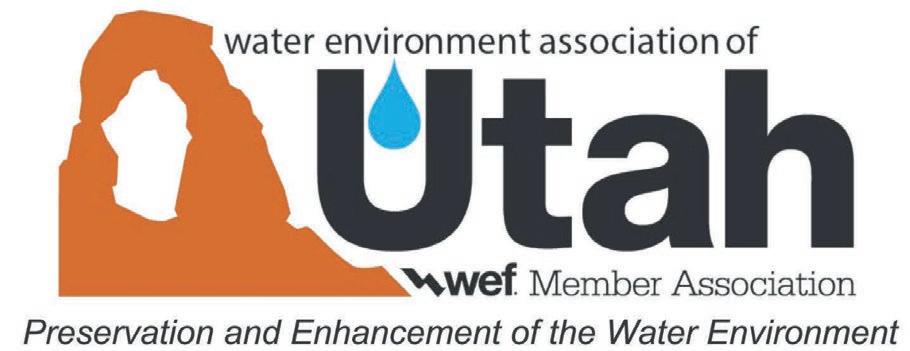
2. Currently working/serving in Utah’s Wastewater field
3. Complete and submit the application to weauscholarship@gmail.com
Application Deadline:
31, 2022
Mid Year
Amount of funds requesting Briefly describe how this scholarship would benefit you at your current job
How will you continue to be involved in WEAU?
Who has been your biggest mentor in the wastewater field?
Provide a recommendation from a member of the wastewater field. To be completed by the person who is recommending you for the scholarship.
The U.S. Stockholm Junior Water Prize is the most prestigious award for a water-related science project at the high school level. The prize seeks to inspire today’s young scientists as they tackle the challenges facing one of our planet’s most vital resources.

State winners receive a state winners medal and certificate, a one year student membership to the Water Environment Federation, and an all-expense-paid trip to the national competition during the 3rd weekend of June.
The national winner receives a cash prize of $10,000, a crystal trophy and an all-expense-paid trip to the international competition in Stockholm, Sweden, in August.
Enter your state competition! Visit www.sjwp.org, check out Paper Guidelines and submit by April 15, 2023.

Speak up and share your knowledge with those who are making decisions on funding and regulations. Aging infrastructure, new and updated regulations, resiliency issues, coupled with economic pressures are placing unprecedented stress on local governments and agencies that provide essential water services. With reduced revenues, federal elected officials are being called upon to make tough choices that will impact water quality and the viability of our communities for generations to come.
As water professionals, we can create a better path—a path that leads to public appreciation for the value of water, investment in our essential water infrastructure, and a better quality of life for our states and communities. WEF’s Water Advocates Program is a simple and effective way for you to become more involved with engaging elected officials, the public, and other interested stakeholders on important water issues. The Water Advocates Program provides training and engagement to promote grassroots advocacy with the goal of creating a network of trained water advocates not only in every member association, but also in every state and U.S. Territory.
Please visit the Water Advocates website at http://bit.ly/wef-water-advocates and let your voice be heard, or email Amy Kathman at WEF to join the Water Advocates program: akathman@wef.org

Include your name, title, organization, address, e-mail, and telephone number. After you sign up, you will be in the Water Advocates program and receive important announcements about bite-size actions you can take to help, right from your computer.


Splashing in a pool, tossing a water balloon—water is one of life’s great pleasures.


Most of us never think about how water gets to us or where it goes when it swirls down the drain. Luckily, we don’t have to. Pumps, treatment plants, and pipes bring us clean water and remove wastewater.
But our water systems are aging. They need investment so they can continue to deliver life’s most precious resource. All day, every day.
Water—Essential. Reliable. Invaluable.
Learn how water works for you. Visit TheValueofWater.org.
Presented in cooperation with the Value of Water coalition
To reach Utah’s water industry professionals through the Digested News magazine and its targeted readership, contact Kris at your earliest convenience to discuss your company’s promotional plans.

Digested News is made possible by the companies below who convey their important messages on our pages. We thank them for their support of WEAU and its publication and encourage you to contact them when making your purchasing decisions. To make it easier to contact these companies, we have included the page number of their advertisement, their phone number, and, where applicable, their website.
Page Number
(AE2S) Advanced Engineering and Environmental Services, Inc. 42 801-331-8489 www.ae2s.com
AECOM 14 801-904-4188 www.aecom.com
Ambiente H2O 37 801-532-4812 www.ambienteh2o.com
Aqua-Aerobic Systems, Inc. 41 815-654-2501 www.aquanereda.com
Aqua Engineering 23 801-299-1327 www.aquaeng.com
Archer Western 5 801-534-4440 www.walshgroup.com
Bowen Collins & Associates, Inc. 28 801-495-2224 www.bowencollins.com
Brown and Caldwell 6 801-316-9800 www.brownandcaldwell.com
Carollo Engineers 38 800-523-5826 www.carollo.com
Cache Environmental Laboratories 11, 29 385-393-8841 www.celcertifications.com
Coombs-Hopkins 42 303-477-1970 www.coombshopkins.com
Davidson Sales & Engineering 4, 17, 22, 26, 41, 46 801-977-9200 www.dseslc.com
DRYCAKE 26 604-535-2238 www.drycake.com
Forsgren Associates, Inc. 33 801-364-4785 www.forsgren.com
Goble Sampson Associates 12 801-268-8790 www.goblesampson.con
Hidrostal 22 630-948-3355 www.hidrostalpumps.com
Integrity Inspection Solutions, Inc. 34-35 208-442-4470 www.iispipeline.com
isiWEST 52 970-535-0571 www.isiwest.com
Lakeside Equipment Corporation 3 630-837-5640 www.lakeside-equipment.com
Maise Technology 30-31 435-465-1779 www.maisetechnology.com
Mountainland Supply Company 2 801-224-6050 www.mountainlandsupply.com
Nickerson Company 38 801-973-8888 www.nicopumps.com
Pittsburg Tank & Tower Group Inc. 38 270-826-9000 www.pttg.com
Prime Solutions 17 269-694-6666 www.psirotary.com
Shelter Works 4 800-794-8037 www.shelterworks.com
Siemens 51 801-463-9900 www.siemens.com
SKM Inc.
Skyline Electric
Smith & Loveless Inc.
Sunrise Engineering Inc.
Twin "D" Environmental Services
UGSI Solutions

Val Kotter & Son's
Waterford Systems
18,
801-677-0011 www.skm.com
801-972-3656 www.skyline.us
24 800-898-9122 www.smithandloveless.com
801-523-0100 www.sunrise-eng.com
801-771-3038 www.twind.net
801-463-9900 www.ugsicorp.com
435-734-9598 www.valkotterandsons.com
801-463-9900 www.waterfordsystems.com
Today’s forest industry is working hard to become one of the greenest industries on earth.
Paper is an essential part of human civilization. While we all use and depend upon electronic communications, it is easy to ignore that it comes at an environmental cost. Worldwide spam email traffic creates greenhouse gases equivalent to burning two billion gallons of gasoline yearly, with numbers rising. More than $55 billion in toxic e-waste material is thrown away every year in the US alone, with a recycling rate of only 20% compared to 64.7% for paper.
No industry is perfect. But the paper industry has made, and continues to make, huge investments in environmental responsibility. Specifying and buying paper from certified sources ensures the continuation and growth of carbon absorbing forests. Using paper with appropriate amounts of recycled fibre helps preserve forests, conserve energy, and maximize fibre usage through paper lifecycles.
































